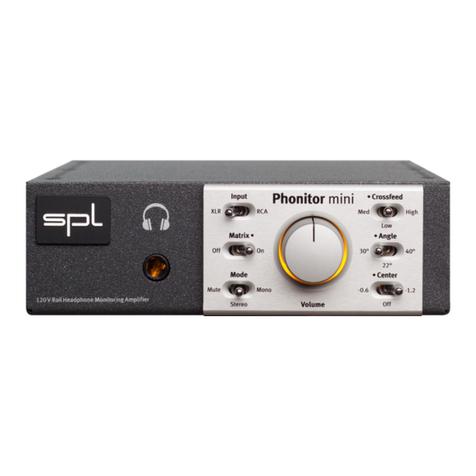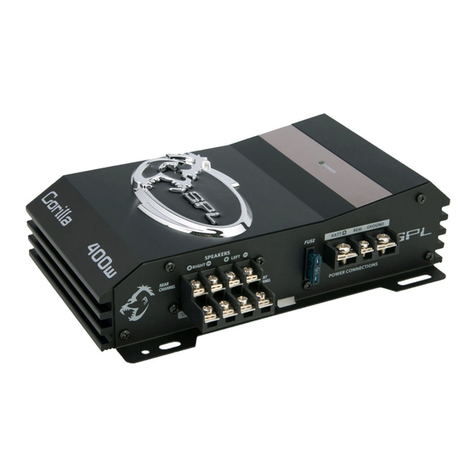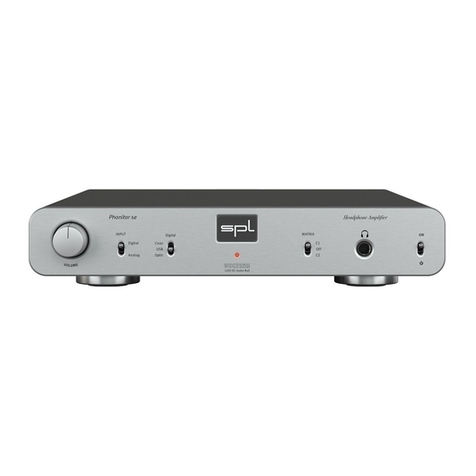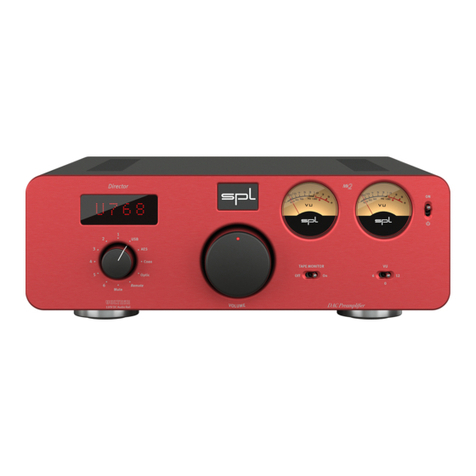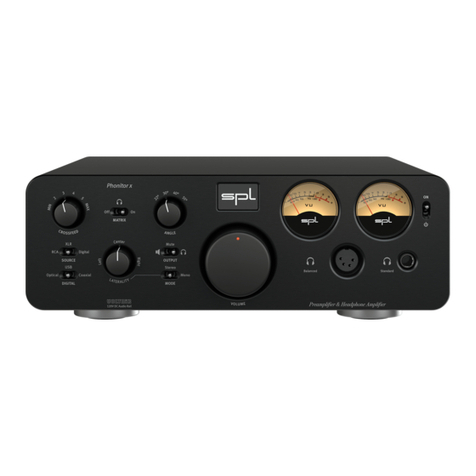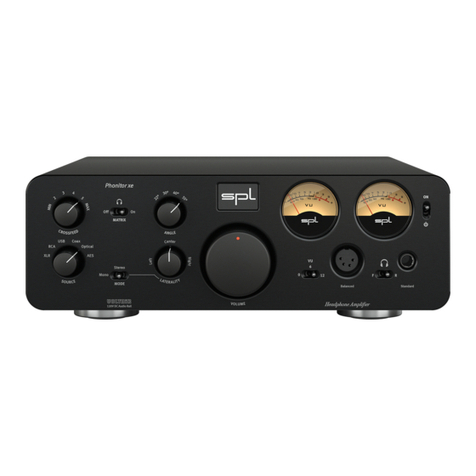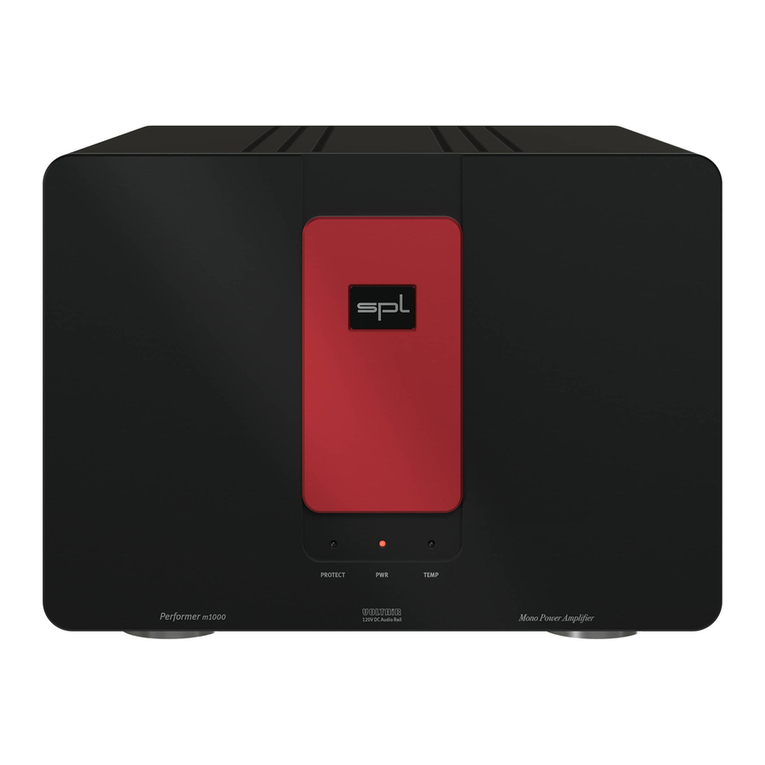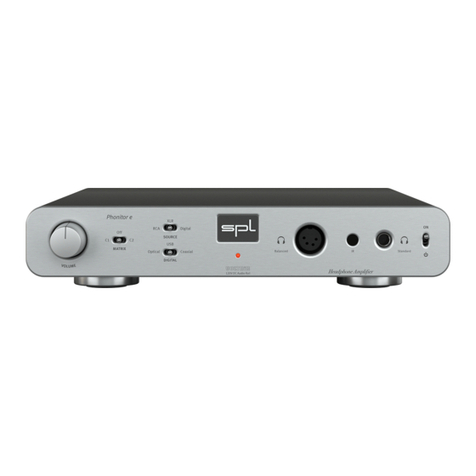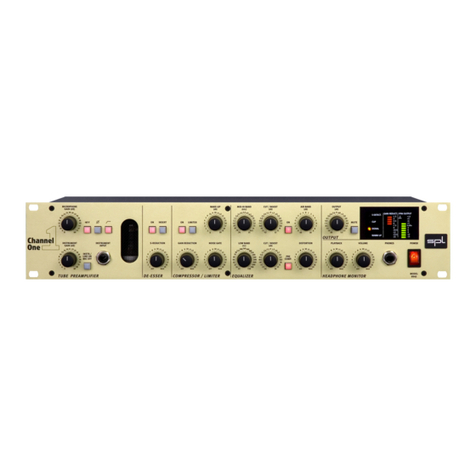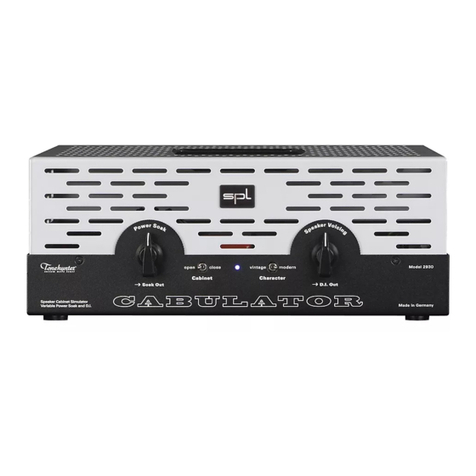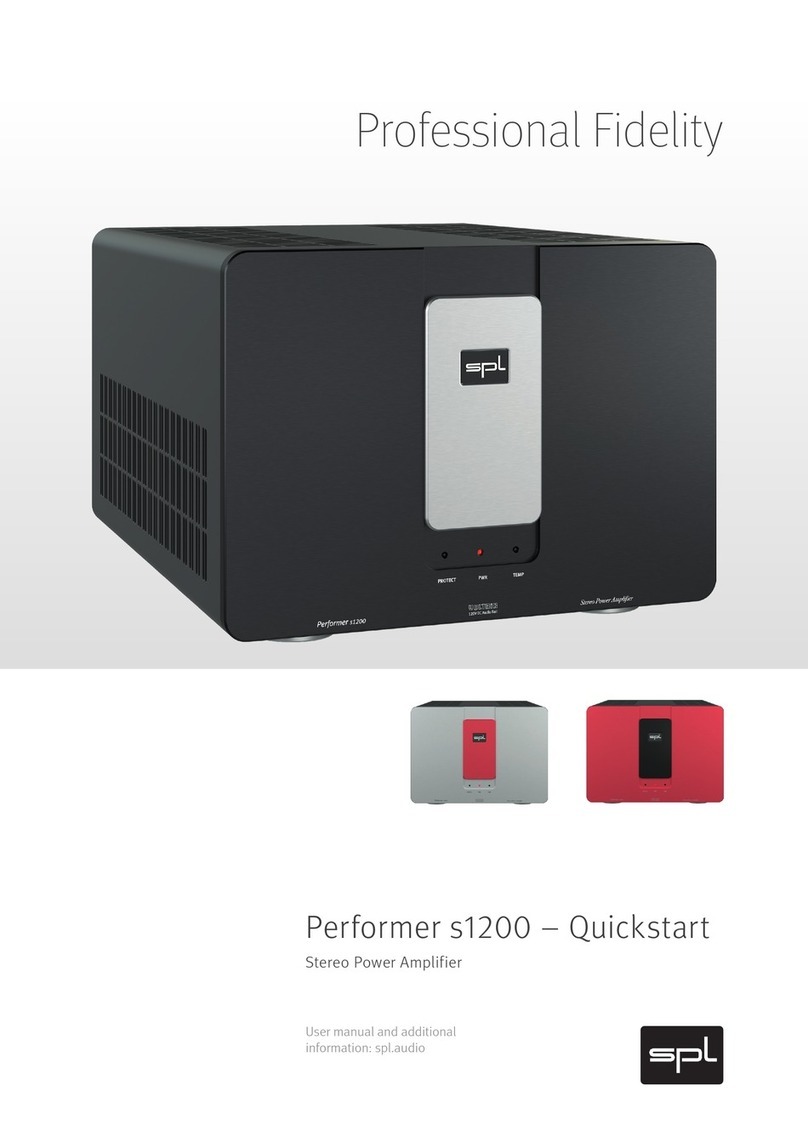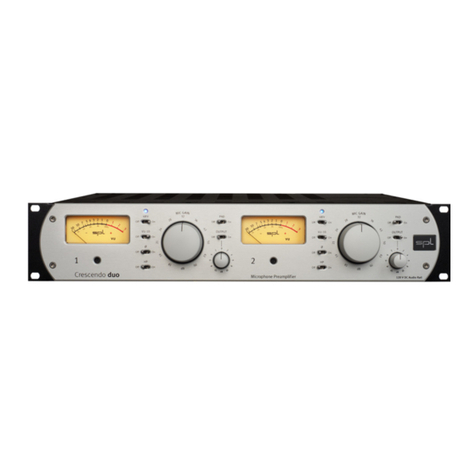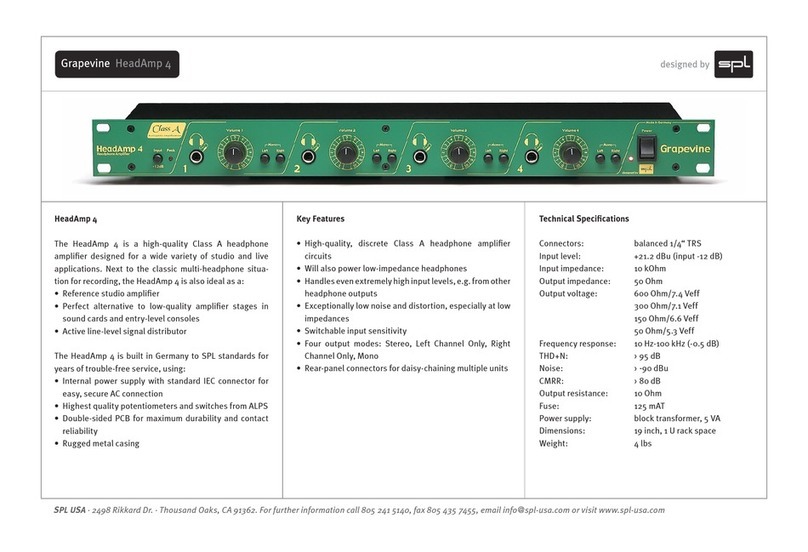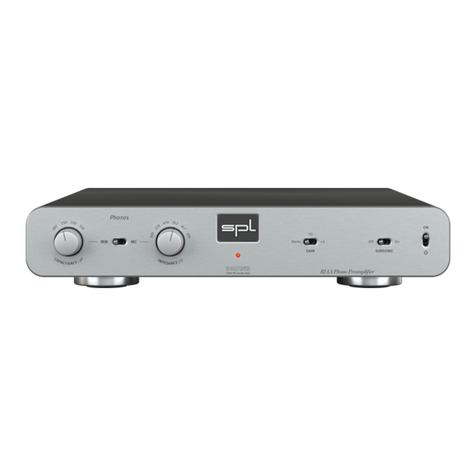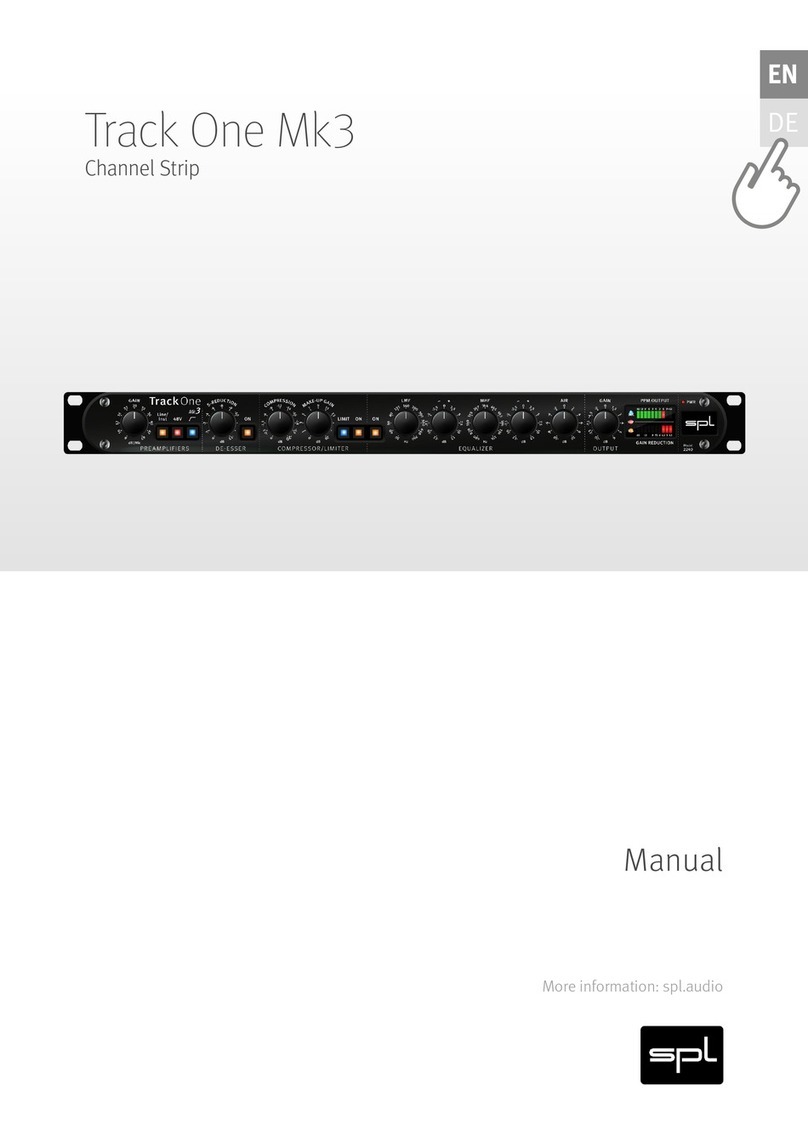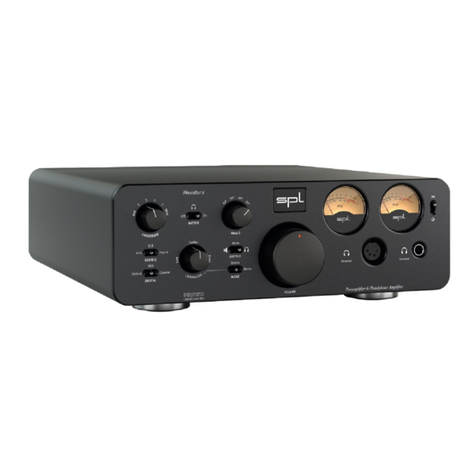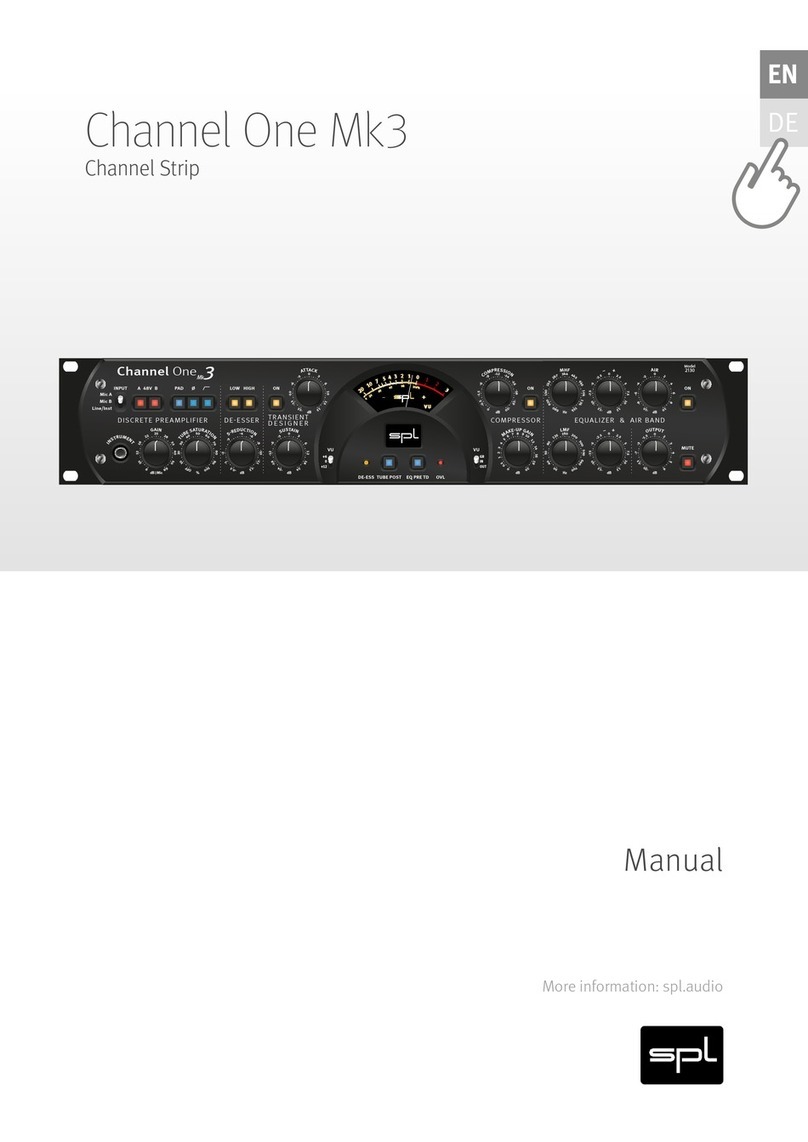8Phonitor 2
Introduction
Phonitor
When we brought out the first Phonitor — the first ever headphone
amp with 120 Volt technology — back in 2008, the professional audio
world seemed to have been eagerly awaiting it. The success of this
unique headphone preamp was overwhelming. In hindsight, we also
had to wonder how none of us had come to the idea of combining basic
monitoring options, speaker simulation capabilities and a headphone
preamp. Ever since we call this new species a „Headphone Monitoring
Amp,“ which inspired the product name itself: Phonitor.
Interestingly enough, the Phonitor not only became best friends with
thousand of professional users, it also won a lot of fans in the Hi-Fi
market segment. But that was by no means a coincidence — ultimate-
ly, the Phonitor can be counted among the best headphone preamps
in the world thanks to our unique 120-volt technology. With its excep-
tional technical specifications and a huge power margin, it can repro-
duce any musical material without the slightest modification, since
signal processing is not limited and, thus, signals are not altered at all.
Music sounds more natural and hearing fatigue is drastically reduced.
Given all that, it was easy to understand the enthusiasm with which
musicians, sound engineers and music lovers received the Phonitor
worldwide.
The New Heart Of Music Playback: Phonitor 2
Many Phonitor users told us they wished they could also use the un-
matched signal quality that the Phonitor provides to feed their speak-
ers. And so began to take form the idea of making its successor a
full-fledged stereo preamp that could become the heart of modern
professional and home systems alike where headphones have a pre-
eminent importance. Moreover, we have achieved enormous advanc-
es with our 120-volt circuits, making the technical specifications of the
Phonitor 2 a new standard in all respects: 141dB dynamic range, 107dB
signal-to-noise ratio (A-weighted in both cases), -112/-114dB THD
(headphone/speaker output with +30dBu output level). Mind you, the
THD measurements define the limits of the measuring equipment but
not those of the Phonitor 2.
Other improvements concern specially the operation of virtually all
headphone types and impedances: the Phonitor 2 works seamlessly
with low-impedance headphones with load impedances as low as 10
Ohm (40 ohms with balanced headphones).
